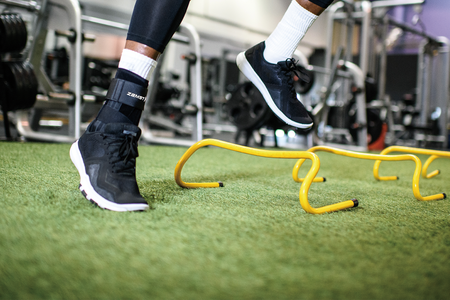The shoulder is a ball and socket joint surrounded by a layer of tissue termed the capsule, as well as several tendons and ligaments. Shoulder instability is a common ailment of overhead athletes often resulting in subluxations or dislocations where the head of the humerus dislodges from the glenohumeral capsule either partially (subluxat ion) or completely (dislocation). Due to the extreme ranges of motion of the shoulder and the shallow glenoid socket, the shoulder can dislocate in multiple positions, but anterior & posterior dislocations are most prevalent. While sometimes the joint spontaneously reduces back into the original joint position, others require assisted relocation. Once a subluxation or dislocation occurs, the joint becomes more vulnerable to recurrence with increasing risk of tissue damage. Thi injury can occur from forceful movement (traumatic) as well as from general tissue laxity or overuse (atraumatic). Regardless of the cause, it is important to be evaluated by a physician and attend physical therapy to improve stabilization of the joint.
ion) or completely (dislocation). Due to the extreme ranges of motion of the shoulder and the shallow glenoid socket, the shoulder can dislocate in multiple positions, but anterior & posterior dislocations are most prevalent. While sometimes the joint spontaneously reduces back into the original joint position, others require assisted relocation. Once a subluxation or dislocation occurs, the joint becomes more vulnerable to recurrence with increasing risk of tissue damage. Thi injury can occur from forceful movement (traumatic) as well as from general tissue laxity or overuse (atraumatic). Regardless of the cause, it is important to be evaluated by a physician and attend physical therapy to improve stabilization of the joint.
Symptoms
• Pain in the shoulder joint which may last for days after initial injury
• Clicking/Catching of the shoulder joint
• Numbness/Tingling in the arm
• Feeling of “looseness” as though the shoulder may “pop out” of the joint
• Inability to move the arm if dislocated or weakness of the arm following joint relocation
Treatment
Following a dislocation, it is imperative to have the joint relocated as soon as possible to decrease risk of further tissue injury. The individual may be placed in a sling for a few days followed by conservative therapy. Physical therapy will emphasize regaining full range of motion and integrating exercises to increase glenohumeral and scapular stability in non-painful positions. If surgery is required, your surgeon will guide you in what type of surgical repair is most appropriate for your individual condition.
Return to Sport
It is advised that individuals regain full range of motion and at least 85-90% strength compared to opposite shoulder prior to beginning a return to sport program to decrease risk of re-injury.
Alyson Hold, PT, DPT, CSC
ProSport Physical Therapy & Performance
2777 Bristol St., Costa Mesa, CA 92626
References:
http://my.clevelandclinic.org/services/orthopaedics-rheumatology/diseases-conditions/shoulder-instability






